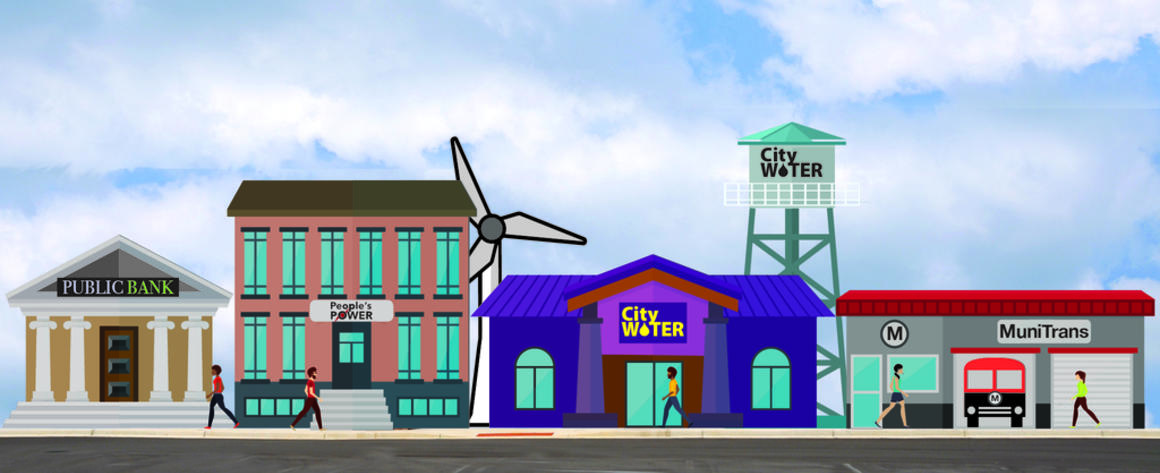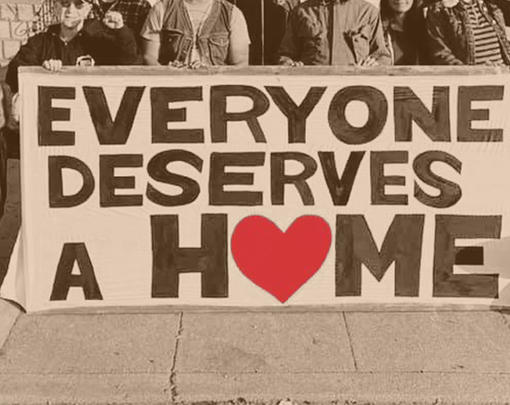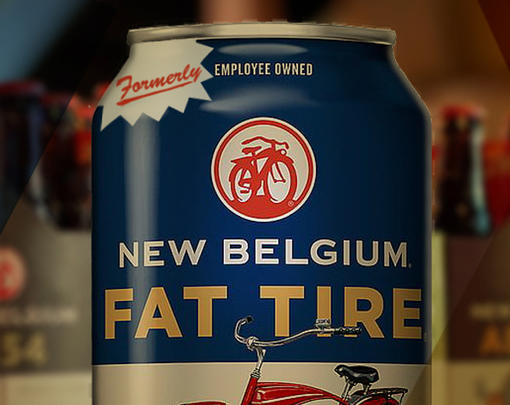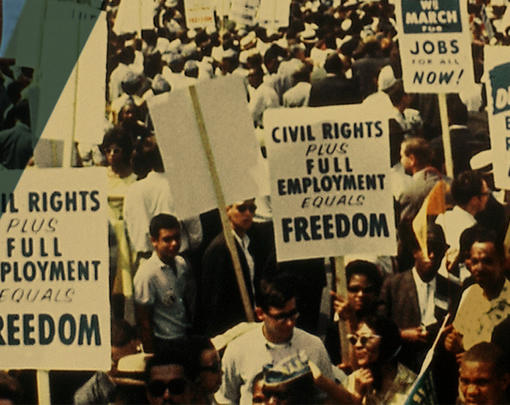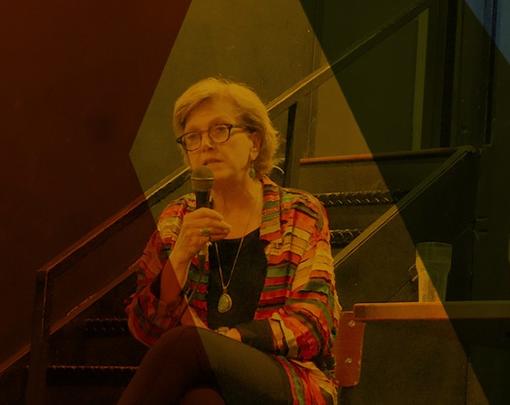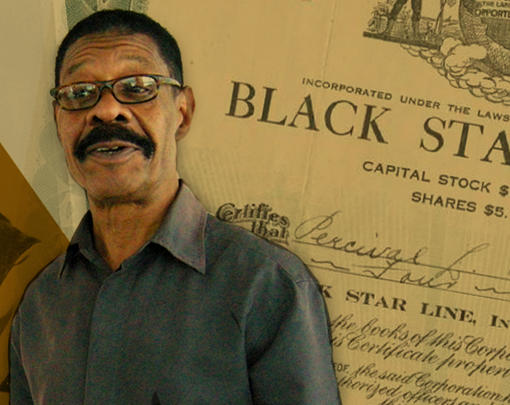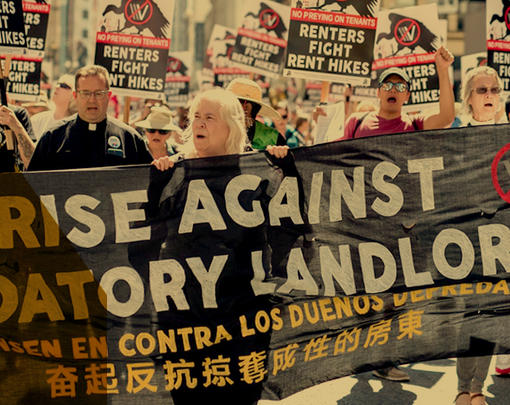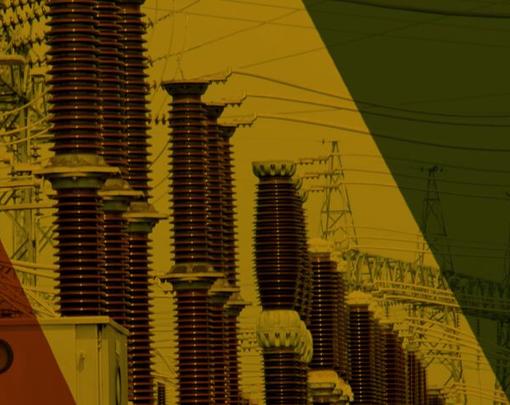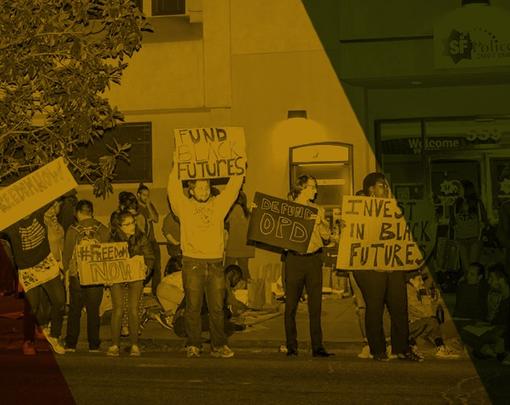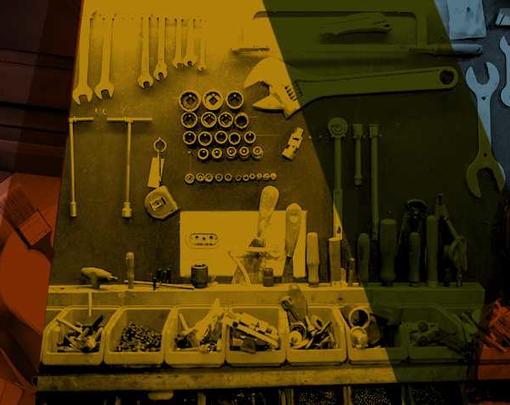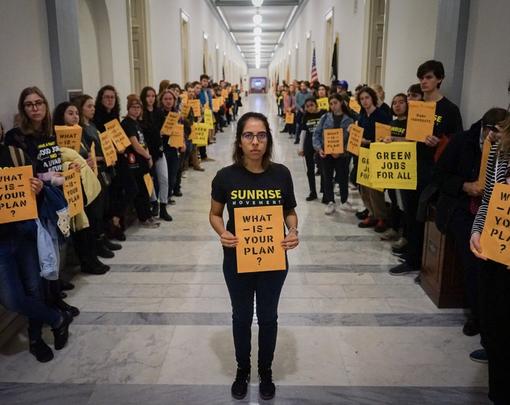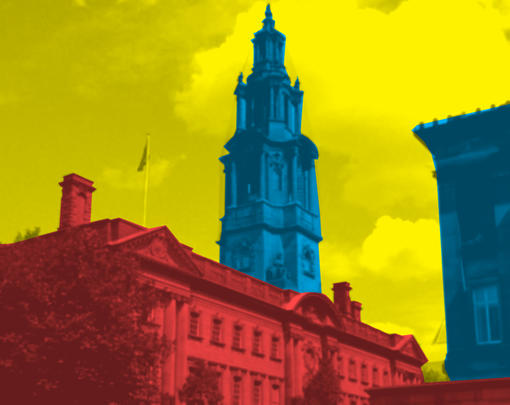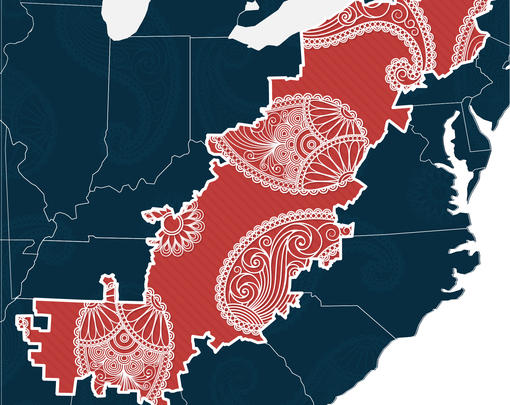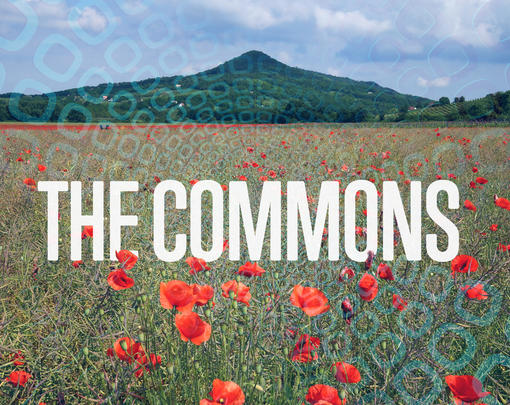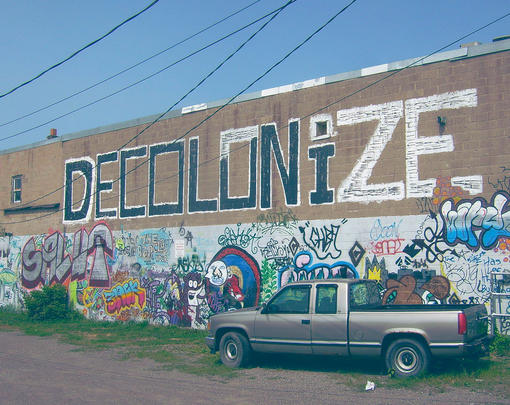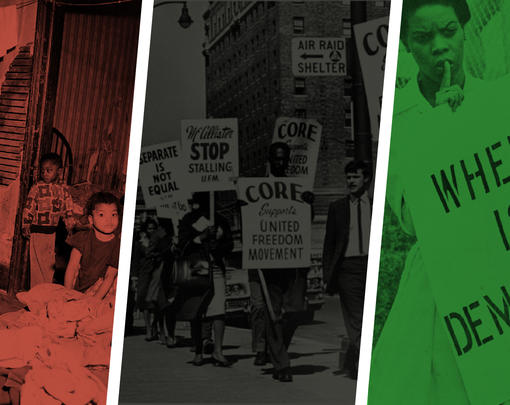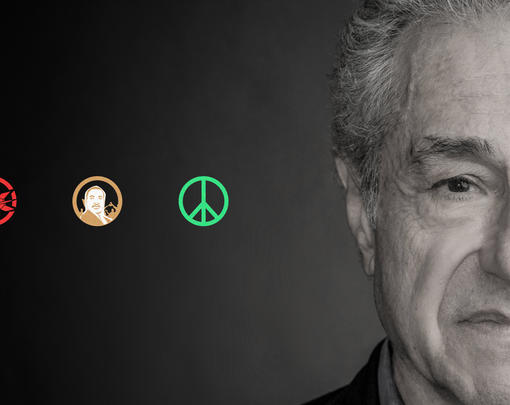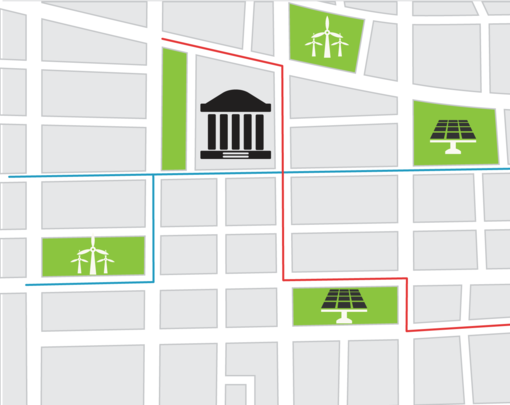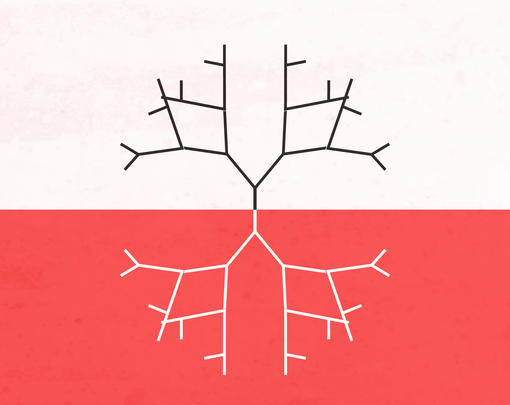This week we’re talking about public ownership and privatization with three special guests. We are joined by Shahrzad Habibi, research director at In The Public Interest, Thomas Hanna, The Democracy Collaborative’s research director and author of Our Common Wealth: The Return of Public Ownership in the United States, and Cat Hobbs, founder and director of We Own It.
The conversation runs the gamut from the pitfalls of the privatization of goods and services to the social benefits of public ownership and envisioning democratic governance thereof.
The Next System Podcast is available on iTunes, Soundcloud, Google Play, and Stitcher Radio. You can also subscribe independently to our RSS feed here.
Adam Simpson: Welcome to the Next System Podcast. I’m your host, Adam Simpson. Today we’re talking about public ownership from railroads, to banks, to schools and beyond. Let me start by introducing our three guests.
First, we have Shahrzad Habibi, the Research Director at In the Public Interest, which focuses on campaigns advancing democratic control of public goods and services.
We’re also joined by Cat Hobbs. Cat is the founder and director of We Own It, a UK based nonprofit dedicated to making the case for public ownership, particularly when it comes to water and railways at the moment.
And finally we have my Democracy Collaborative colleague, Research Director Thomas Hanna, author of the new book, Our Common Wealth: The Return of Public Ownership in the United States.
Shar, I want to start with you. At In the Public Interest, there’s a lot of work around monitoring privatization efforts, particularly the privatization of schools and prisons, for instance. Can you say a bit about this work and what some of the pitfalls are that you have observed with respect to privatization and when it comes to public goods and services?
Shahrzad Habibi: Sure. In the Public Interest is a research and policy center that examines privatization and a variety of sectors in the United States. And what we find is that regardless of sector, there are a number of frequent and serious pitfalls. The first is this loss of democratic control. Many of these contractual arrangements are not only literally stripping away both public and community input and how a public service or a public asset is planned, but also taking away the ability of policymakers to make important planning decisions.
So, for example, when the city of Chicago privatized their parking meters for 75 years, they gave up the ability to make critical planning decisions. The contract requires the city to compensate the private entity whenever the city makes decisions that may adversely impact the private entities’ ability to collect revenues from those parking meters. So, let’s say the city wants to have a community parade or a street fair. Those are instances where the city would have to pay the private entity to be able to do those things. The city is also restricted from making improvements to streets that contain those parking meters such as, let’s say adding bicycle lanes or expanding sidewalks, because these types of projects might compete with the parking meters and decrease corporate revenues. So these are restrictions that limit the city’s future ability to accommodate residents. And this lasts for 75 years.
The second pitfall that we see is around costs and costing per se. Many times the private corporation isn’t actually able to deliver the service or run the asset for a lower cost than the government. And depending on what we’re talking about, these costs may be directly passed on to the users. In 2015 there was a really interesting study where researchers examined the 500 largest water systems. And what they found was that on average, private, for-profit utilities charge the typical household 59 percent more than local governments charged for drinking water service. So, that’s really significant.
And then the other issue is around quality, because private corporations’ primary concern is around maximizing profits. There are inherent motivations to cut corners, whether that’s paying employees less than their public sector counterparts, even cutting the number of employees working on that service or asset altogether, or using inferior materials or making programmatic decisions that run counter to the public interests. These are things that amount to a decline in quality.
And then, just lastly, I’ll mention quickly that there’s a really big loss of transparency and oversight when public goods are privatized. In many cases routine information about the service or asset may not be available to the public anymore and may not be subject to open records laws. And we’ve even come across situations where the private corporation isn’t even being up front with the government about what’s actually going on, making it really difficult to provide adequate oversight. And this point is really related to my first point about and the ultimate loss of public control through privatization.
Adam Simpson: Cat, I know that in the context of United Kingdom, there’s been a lot of debate recently both about the effects of privatization and the benefits of public ownership particular when it comes to railways, energy and water. And I wanted to ask, how do you make the case for public control of public goods and services as opposed to private management thereof? And how is that message generally received?
Cat Hobbs: Yes, as you say, in the UK we’ve had a real opening up of this debate. And I think what we’ve had for the last 30 plus years until now is a kind of commitment to the ideology that we have to have everything in private hands. That we have to have everything privatized ever since Margaret Thatcher and the ’80s where these public goods were privatized, the policymakers have been essentially committed to that path. And so what’s been really interesting recently is that basically the public is finally getting a chance to have a think about whether this is the right way forward. And actually privatization has never been popular in this country; it’s always been incredibly unpopular because people actually feel instinctively all the points that Shar made around cost, quality, accountability, flexibility.
We can’t get the kind of amazing public services that we need if they’re privatized, and people realize that. They realize that it’s a real nonsense to try and insist that everything be privately owned and run. And I think people really believe that public services are about offering a good, important social good to people. And they’re not about making a profit for a handful of shareholders. So a public entity is incredibly popular, and we’ve had polling that’s showing 83 percent for the public ownership of water, 77 percent for public ownership of energy, 76 percent for rail and so on and so forth. So it’s really exciting at the moment that the debate that’s happening here right now.
Adam Simpson: Absolutely. Thomas I want to move to you. Sometimes when someone suggests public ownership as an alternative to private control of goods and services, there’s a perception that these proposals are abnormal or radical. perhaps particularly in the United States. But just noting that the subtitle of your book is “The Return of Public Ownership in the United States.” I have to ask, where did it go?
Thomas Hanna: Well, it actually didn’t go anywhere. The subtitle refers mainly to the return of public ownership as a talking point, as a strategy, as something that people are interested in; they engaged with. Actually, public ownership in United States has remained pretty resilient and pretty robust, surprisingly so, across a wide variety of sectors. And where I think it’s interesting, it’s where it’s coming back into public discussion. So just now in Los Angeles we have a teacher strike going on and one of the things that they’re striking against is the privatization of schools and charter schools in California. We also have PG&E, which is a major electric utility, which has been blamed for perhaps starting some of the fires out in California, which is declaring bankruptcy. And a lot of climate and energy activists are talking now about how to think about maybe converting PG&E to public ownership, into a publicly owned utility.
Shar mentioned the parking meter catastrophe of privatization in Chicago and that privatization actually helped scuttle privatization of Midway Airport, because it was so bad and people had realized that it’s so bad. Water privatizations as well are being reversed in the United States and people are really starting to develop campaigns and a lot of energy around public ownership of water. So I think the return is it’s really come back onto the political agenda. But in terms of actual practice, it never really went away. Public ownership remains pretty prevalent and resilient in the United States.
Adam Simpson: Thank you for that. One trend here is that around the world, there seems to be a growing resistance to privatization and increasing support for the remunicipalization of enterprises and the insourcing of contracts. Shah, are we seeing any of this in the United States in the areas that you’re following and that you’re working in?
Shahrzad Habibi: Yes. So one thing that Thomas mentioned that we’re doing as well is growing remunicipalization in the area of water. So just in 2018 I can think of three localities that brought back their water systems. Putnam, Connecticut; Dallas; Oregon; Southern Virginia. And it’s also worth mentioning that just a couple months ago, Baltimore passed a charter amendment by a huge margin, 77 percent, to ban privatization of their water system. So this is essentially Baltimore residents saying, “Our public water system is going to be permanent. It’s a valuable asset for our city.” And it really was a historic victory for local public control of water.
There’s also been—and we’re seeing activity around—private prisons. One of the most cited examples comes from Idaho where the state brought back prison operations under public control after a prison that was being run by a private corporation was plagued with incredible amounts of prisoner violence, gang activity and human rights violations. And much of it was due to the private company’s failure to provide adequate staffing. And the prison, it was so violent that it became known as the gladiator school for all the fighting that took place inside. And it ended up being the subject of a number of high-profile lawsuits.
But just kind of going back on a more kind of macro scale, there are some numbers from the International City County Management Association that were published in 2012 that showed that insourcing was actually happening almost as much as new outsourcing was. And interestingly of the reasons that these governmental entities gave for insourcing, the most popular reason was insufficient cost savings. So 53 percent of respondents said, “We insourced because there wasn’t enough cost savings.” And then right after that at 51 percent, it was unsatisfactory service quality. So I think the pitfalls that we identified with privatization are really showing up in governments’ real experience and they’re taking action to return to public control.
Adam Simpson: I just want to follow up the privatized prisons aspect here, because I know when I talked to some colleagues that when we’re talking about privatized prison there’s a conception that, well we don’t really like public prisons either. There was a lot of problems with the criminal justice system in the United States. And there’s more energy around reducing the enormous prison population we have in this country. But in reading some of the work that In the Public Interest has been doing, there seems to be a very clear connection between or there are at least an incentive structure for private prisons to increase prison populations and the population of formerly incarcerated Americans than there is for public institutions. And I just wanted to prompt you with that information.
Shahrzad Habibi: So, yes, in the United States, there’s two major private prison companies, Core Civic and Geo Group. And these companies are not only operating a lot of prisons and immigration detention centers, but they also are increasingly owning the physical facilities themselves. They are organized as real estate investment trusts or REITs, which allows them to largely avoid corporate level taxation. And so this is another way where they are physically trying to embed themselves in the criminal justice system in a long term way. So we know, one, it is true that the US does have the highest number of incarcerated individuals per capita than any other country. But the privatization of our criminal justice system does provide incentives to keep it that way and work against big picture reforms such as sentencing reform.
So a few years back we did this report where we examine state level prison privatization contracts. And what we found was that over two-thirds of them had bad guarantee provisions. And so what this means is that the government must keep a certain percentage of the beds filled. And typically it was around 80 percent to 95 percent. But we saw contracts with thresholds as high as 99 percent. And if the beds aren’t filled, the government must pay for those empty beds. And so this literally ensures that the corporation makes a certain level of revenue and it minimizes their risk around any sort of prison population fluctuations and it puts pressure on governmental entities to keep those beds filled.
Adam Simpson: Right, right. So in this sense, like what we’re talking about in the context of prisons, the public ownership versus private ownership both seem to have very tangible effects on people’s lives. And I feel that’s probably equally true when it comes to healthcare. Cat, I know that there’s been a lot of concerns over what may or may not happen to the national health service in the UK. But I just wanted to prompt you to say a bit more about the kind of tangible effects that people can feel when it comes to public ownership versus private ownership in your mind.
Cat Hobbs: I think we’re at a real crossroads in the UK right now because we’ve got the NHS. It is by many measures, one of the most efficient health care systems in the world. People are incredibly proud of it and they want it to be in public hands. And yet what’s happening right now is it’s being cut in and it’s been privatized. So, the government is doing a really good job of undermining the NHS and making it look bad essentially by underfunding it and making it look as if it’s not working so that the private sector looks like a shiny new solution. But it’s definitely not, and all of the evidence shows that in the US health care has a much higher bill for the country as a whole because it’s just not efficient to do things that way. So, we need not go down that path.
What’s happening right now is real kind of backdoor privatization. The government wants to package up different bits of the NHS service and potentially offer not service provision contracts to private companies, but actual management of services that could be across huge areas of people for many years. So it would hook private companies into our health system even though there’s absolutely no reason to do that. And in fact, we know that it would make our health outcomes much worse and all of the measures show that. So, it’s really important that we don’t allow this to happen. It’s a really dangerous time right now.
Adam Simpson: I just want to follow up on that, Cat. You mentioned some of the numbers earlier, but given the numbers that we’ve seen then about the support for public ownership in the United Kingdom, there seems to be a trend that support is growing. What do you think that is? Do you think it’s because, is it related to broader economic trends related to the financial crisis in 2008? Is it other social causes for people kind of thinking through the idea of public ownership? Or is it maybe the experience and the kind of talk that’s going on around the NHS and the railways and other types of privatization schemes. But what do you think is leading to this growing support for public ownership that you’re seeing?
Cat Hobbs: So I think the public ownership has always been popular, but it hasn’t always been high on the agenda. What we’ve seen since We Own It started in 2012-2013 is that actually public ownership has come onto the agenda. And that is largely because politically it’s now in the debate in a way that it wasn’t before because of a Labour Party led by Corbyn and McDonnell, which is actually embracing the idea of public ownership for the first time in 30 years. So in 2017, this manifesto called for public ownership of energy, water, the railway, Royal Mail and committed to pushing back out of this sort of thing, et cetera, et cetera. And that was really the first time that this conversation opened up.
And obviously we’ve got a media that has been fed by the sort of right-wing ideology. And so lots of the journalists will come and say, “Well, this can’t be possible. How can we do it?” But actually, amongst the public, people really feel and have always felt that the public ownership is the right solution for public services. It’s just that they haven’t had the confidence to really be able to feel that that’s politically possible. And I think that’s what Corbyn’s leadership has done; it’s opened up the space. It’s opened up what we might call the Overton window, the range of acceptable debate. And now that that’s opened up, it’s really clear public ownership is popular, it’s sensible, it would save us money, it would give us better services. So people are really questioning why we’re so committed to privatization. I think there’s also a sense probably across many countries that we want more control over our lives and our economy.
And so with Brexit there was a kind of rallying cry of take back control. I think people want to feel like we have some kind of control over basic public services that we use every day. And they’re really sick of the private companies that are involved in these public services. You know, private companies like Karelian, which failed and left government to pick up the pieces. The train companies, which charge ridiculously high rail fares. The water companies, which pollute our rivers and dodge tax and put up our bills and we don’t get any choice about it. So I think all of these things together, people kind of look at the public services that they have to rely on and they don’t feel in control and they want to feel some control. So maybe that sense, too, has really come to the fore in recent years.
Adam Simpson: It sounds like one big component is kind of political vision and leadership. Is that right?
Cat Hobbs: Absolutely. I think it’s really interesting because actually what we’re talking about here is a mixed economy. We’re not saying private companies don’t get to do anything. We’re saying they shouldn’t be running our public services. And that’s not actually a particularly radical idea. And yet in the political context, it has been radical and it continues to be radical. And the only way that it’s been put onto the agenda is by quite a bold manifesto by Labour Leader Jeremy Corbyn and Shadow Chancellor John McDonnell, and their commitment to these core values that people believe in. So I think leadership has been really key.
Adam Simpson: Following on from there, I want to ask Thomas, I know you’ve looked a lot at this as well. A key issue for many activists and politicians, including the British Labour Party, is not simply returning to the traditional top-down managerial forms of public ownership that were dominant in the past but developing new governance structures and arrangements that make these enterprises more democratic. How do you approach the issue of democratic governance when it comes to public institutions?
Thomas Hanna: Yeah, that’s exactly right. Traditionally in the 20th century, especially in the United Kingdom, but also in the United States and other parts of the world, the public ownership was arranged as the sort of traditional state-owned enterprise: very top-down, very bureaucratic. In the UK, it’s often referred to as the Lord Morrison model, after the architect of the postwar nationalization program of the Labour Party government of Clement Attlee. But from the perspective of trying to build a more equitable, just, sustainable, and democratic society and economy, simply returning to those top-down forms is insufficient. And the Labour Party I think really understands this—John McDonell especially—in their manifesto and in their program. They’ve made it very clear that they’re not looking to return to that model and they’re looking for things that are more democratic and more participatory.
So the real question for us, I think, as people who are interested in public ownership is how to articulate a vision for democratic public ownership. And I think there’s a lot of examples that we can draw from both in the United States and around the world. I’m sure Cat—I know because I’ve spoken with her before—has some great lines and some great examples from the European experience. So I’ll turn it over to her in a second. But just in the American experience, because of the way the American system is structured, we are more decentralized politically. So it actually puts public enterprises and public ownership closer to the people in some respects, especially at the local and the municipal level. So there are interesting examples to draw from in the US experience, ways to make things more accountable and more transparent.
Nebraska is an all-public-power state, so every resident and business in the state of Nebraska gets their electricity from a publicly owned entity—mostly publicly owned utilities, but also some cooperatives in Nebraska, even though these have traditionally been very, as I said, traditional public-owned enterprises. But climate activists in the state are now starting to think about how they can get involved in these utilities to transition the state to more renewable energy. So, I think three or four climate activists, renewable energy activists have been elected recently to the board of the Omaha Public Power District and to try and move and transition that power district to more renewable energy. So that’s an example of basically taking democratic control using the democratic process that’s embedded in publicly owned enterprises and public ownership to transition to a more sustainable society.
Adam Simpson: I just wanted to take what Thomas said and pitch that over to Cat cause I know that you focused on the campaigns, on the need to deliver modern, high-quality public services in a transparent and accountable way. I think that’s very much related to democratic governance. Do you want to say a little bit more about that? Are there any examples that you’d point to?
Cat Hobbs: Yes, definitely. What we’re saying is we need to make public ownership so widely successful that they can never, ever be reversed. And that means obviously it has to be democratically accountable. It has to be very efficient and effective. It has to be green. It has to be innovative as to be all of these things. And so I think it’s really important that we look at all of the best practice that is out there. And we’re basically in the process of thinking about this and working out what are all of the concrete examples that we can pull together to look at what great public ownership looks like. And I think there are lots of different examples. So as has been mentioned this and this wave of remunicipalization or bringing often very local public services into public hands across the world.
In the US, in Thomas’ book, it has been fantastic to read about all these practical examples and see how possible it is. And in terms of best practice, I think one of the best examples that we often think about is water in Paris. So as I mentioned in this country we have water companies that have private monopolies, they’re doing a terrible job. And we’re looking to what we could replace them with. And in Paris they brought their water into public ownership in 2011. They have a governance model, which really has a range of stakeholders involved looking at the social and the environmental as well as the economic side of the service that they’re providing. They have what’s called an observer, where they have a kind of a bunch of different stakeholders assessing what the company’s doing as a publicly owned company.
They have monthly meetings that are open to the public and all of their data is open and transparent. And what they’ve been able to deliver with that is lower bills, a better service. I mean lots of innovations. So, for example, they’ve made water accessible to homeless people throughout the city. They’ve introduced still and sparkling water fountains throughout the city which has been referred to as socialism with a sparkle. So, there’s all these great practical examples of what can actually happen on the ground and how innovative a publicly owned service can be. And I think it’s about having that public mission and public governance set up right. But it’s also about thinking about how it connects with people and with public service users at every point. And trying to come up with real tangible ways that we can make a difference to people’s lives.
Adam Simpson: Socialism with a sparkle sounds like quite the campaign tagline to me. But I do want to move on, and I think I’ll start with Shar here. There’s often a perception that privately owned businesses are more efficient than publicly owned businesses. That they’re better at providing services and distributing goods than a public institution. And I think just more broadly, a key component of neoliberalism is that the government and the state can basically do nothing effectively. But I wanted to ask in your experience and in the work you do, how do these kinds of tropes strike you? And if it’s something that you don’t think is true, I wanted to ask, what do you think these kinds of ideas come from?
Shahrzad Habibi: Sure. So I think the claim that the free market or private business is more efficient or innovative than government has been proven false time and time again. I think privatization proponents argue that handing over a public goods to corporations cuts costs for taxpayers. Yet they don’t mention that the costs often come out of workers’ paychecks, if those workers are even lucky enough to keep their jobs, or it comes out of service quality. And so when we’re talking about innovation and privatization leading to innovation, often what that means is layoffs, worse wages and benefits, inferior service quality, less transparency, less accountability.
And just a couple of examples just to illustrate this: After Iowa hired insurance companies to manage its Medicaid program in 2017, the average cost of insuring people tripled. And an Indiana toll road that was built using a public private partnership model that utilize private financing turned out to be $137 million more expensive than if the state had used its own public financing. And then charter schools, which are publicly funded but privately operated. We have numbers that show that San Diego, California school district is having to pay almost $66 million a year in order to have for-profit charter schools. So I don’t think it’s true and I think we have a lot of counterexamples that show that it’s not true.
But I think it’s also worth mentioning that there has been this decades-long push for privatization that has gone hand in hand with slashing taxes and attacks on working people. And as corporations’ profits began to wane in the 1970s, these corporations got together and really began consciously organizing their interests as a group. And as just one sign of this coordinated effort, the number of corporate PACs increased to over 1,200 by the middle of 1980. And so why is that going on? You have conservative think tanks like the Heritage Foundation and public figures like Grover Norquist that are churning out antigovernment propaganda and popularizing the idea that government and the public sector should be limited. And they were really successful because unfortunately this idea of running government like a business is considered conventional and unfortunately in a lot of ways bipartisan wisdom.
Adam Simpson: Thomas, I want to go to you. What do you think about this kind of narrative that public institutions are just inherently inefficient?
Thomas Hanna: Yeah, as Shar said, neoliberalism has done a really good job, and neoliberals have done a really good job over the past 40 years or so of convincing people that, in the Reagan term, government is the problem and not the solution, or the Margaret Thatcher line, there is no alternative to privatization and marketization and so on and so forth. But if you actually dive into the empirical and the theoretical literature a little bit, which I did in the book, you actually find out that there’s no consensus in that literature as to whether or not private ownership is more efficient than public ownership.
There are dozens of studies that I highlighted in the book chapter where really conventional academics, people who are not in favor of public ownership in any way went into a study of some sector in some country at some period of time. And they were expecting to find that the private utilities or the private water system or private telecoms or whatever was going to be inherently more efficient than their public counterparts. And to their surprise, the publicly owned bank or whatever was as efficient as the privately owned banks and so on and so forth. So that’s one aspect of it.
The second aspect of it is we really need to think about efficiency differently as well. Most studies of efficiency really focus on pure profitability or other financial metrics, whereas publicly owned enterprises and services really exist to fulfill other functions as well, not just in terms of making profit. There was one really funny story that I was told that I put into the book and it’s about this concept called remailing, and I’d never heard of it. And apparently there was a thing where you could for instance, take a package that is supposed to go from the Netherlands to Germany, but because postage rates are expensive there, it was actually cheaper to fly it to India first and then remail it from India to Germany. So from a financial measure that is efficient, but from every other measure, especially carbon intensity, that’s an extremely inefficient way of doing things.
Cat mentioned earlier about the NHS and the health system differences in the United States and the UK. That’s a really stark example. The United States spends somewhere in the realm of like 17 to 18 percent of its GDP on healthcare, whereas the nationalized national health service system in the UK is about eight or 9 percent of GDP. It’s a stark cost difference. And actually, that was an interesting story the other day about Rand Paul. He’s obviously the libertarian who is very much against socialized medicine. Apparently he’s going up to Canada now to have surgery in Canada at a facility that’s a world renowned facility, for whatever the surgery that he needs. But he’s paying out of pocket and whatnot. So if he’s saying that it’s not really socialized medicine, but this hospital in Ontario gets the majority of its funding from the public, from the state, from Ontario.
Adam Simpson: Oh, Rand.
Cat Hobbs: I think the other thing that part of why these right-wing think tanks have been so successful in spreading this ideology and getting it listened to and policy making circles and in the media is because we’re familiar with the idea of a market and consumers and how that works. And there seems to be a certain logic in it. If you have competition, that drives down prices, that improves quality. And so that will be fantastic. And when our services were privatized, that was the story that was told to people. And obviously people were suspicious and many people didn’t believe it and haven’t believed it. However, it makes a kind of superficial sense. And I think what’s really important is to recognize we don’t have meaningful markets in public services. It doesn’t make sense to try to create a market in schools or hospitals or to create a market in the railways or water or energy. It’s actually these are different kind of economic gauge that often natural monopolies. You don’t really have a choice about which train you get on or where your water comes from. And it makes sense to provide them in a different kind of way. And so we need to get our heads around that. And if we try to create competition in the schools that our children go to or the hospitals that people rely on it’s actually, it’s just a crazy way of looking at it because we need excellent schools and hospitals for everyone. And you need to be able to go to a local school or hospital and to be able to get a fantastic service. So we need to kind of get away from that whole way of talking and thinking, which sounds kind of so seductively persuasive but actually just doesn’t really make any sense at all.
But at the same time, I think there is a kind of logic about competition where we have to say, “Well, if we haven’t got competition improving the service that we get, then how do we do that?” So how do we make sure that whenever we have public ownership, we have the right kind of structures and incentives and management and cultures that create really excellent organizations and results? Because if we don’t do that, then we won’t get the kind of services that we really need. So we need public ownership to always be really, really fantastic. And to kind of acknowledge that in other areas of the economy competition can be a driver, in public services and natural monopolies it doesn’t make sense for it to be. So how do we make sure that we have excellent services in this context?
Adam Simpson: Absolutely. And just to close this out, I wanted to raise the question of what public ownership looks like in the context of climate change. So this is probably one of the bigger defining challenges of our generation. And I just wanted to ask about what the role of public ownership, and really this question is for anyone, but what the role of public ownership can be in playing a positive role in terms of climate change? Because just to front load the question with some negative examples, I know that a lot of public banking advocates like myself talk about the Bank of North Dakota, but it played a rather destructive role when it comes to the situation with Standing Rock and the Dakota Access Pipeline. I know that a lot of sovereign wealth funds are publicly owned but are bolstered by large fossil fuel reserves. So just to kind of pitch it to everyone, how can public ownership and publicly owned institutions play a positive role in kind of meeting the challenge of climate change?
Thomas Hanna: So for me, public ownership is not a panacea. Public ownership for me is a flexible ownership form that can really be deployed to whatever the needs are of a democratic society. So just having public ownership isn’t going to guarantee you any egalitarian or more sustainable outcomes. It really reflects the priorities of the local population. If the priorities of the local population or the local society is to extract as much oil as possible and burn it, like many state-owned oil companies around the world, that’s going to be what the state-owned oil company does. The same if the priorities of the state of North Dakota is to run pipeline and to protect those pipelines against indigenous protestors, then the bank is going to be forced to support that.
But on the flip side of that, we have places where publicly owned utilities are the vehicles for getting to 100 percent renewable energy. Because the people of, say, Boulder, Colorado have decided that they want to get to 100 percent renewable energy and Xcel energy, that big corporation, isn’t going to do that for them., so they’ve decided to use a publicly owned utility. Same in Burlington, Vermont and elsewhere. I think the point is that private ownership is just really constrained. It’s constrained by the profit motive. It has to return quarterly returns. It has to have shareholder value and so on and so forth. Whereas, public ownership doesn’t have to do that. We can decide what makes public ownership efficient. We can decide what makes public ownership successful and that doesn’t have to be a profit, unlike private corporations. That could be environmental sustainability and is in many cases.
Shahrzad Habibi: Couldn’t have said it better myself.
Cat Hobbs: I agree with everything that Thomas said.
Adam Simpson: Okay, well, that was my final question. Thanks everyone for participating today. Thanks again to my guests, Shahrzad Habibi from In The Public Interest, Cat Hobbs from We Own It UK and Thomas Hanna from The Democracy Collaborative. I’m Adam Simpson. Thanks everyone for being on the Next System Podcast and we’ll see everyone next time.




